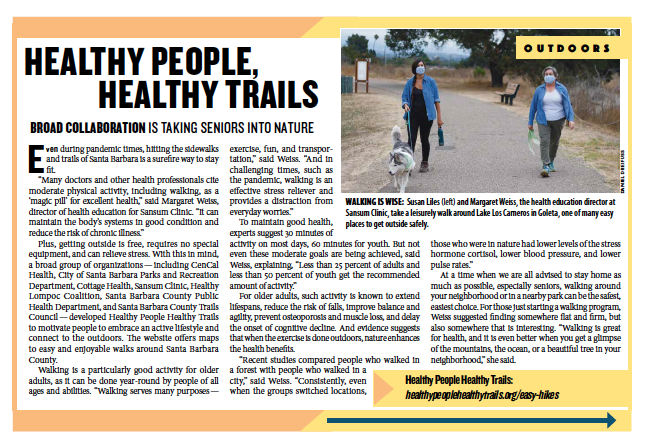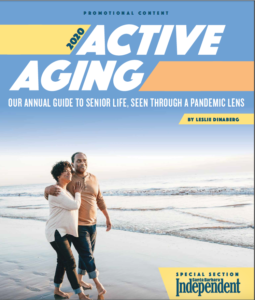 Robots are no longer a futuristic notion. In fact, they’re becoming more and more common in nearby operating rooms. Robotic surgery is an advanced form of minimally invasive surgery that makes use of computer-controlled robots to do what humans can’t—and also to do what surgeons can, only better.
Robots are no longer a futuristic notion. In fact, they’re becoming more and more common in nearby operating rooms. Robotic surgery is an advanced form of minimally invasive surgery that makes use of computer-controlled robots to do what humans can’t—and also to do what surgeons can, only better.
Think about how bulky human hands are when compared to a robot’s. “The robotic instruments are articulated at the end of the instrument where the working end is, so the working end can move like a hand would, as if it had a wrist,” explained Dr. Anne Rodriguez, a gynecologic oncologist and breast surgeon who heads up the Cottage Health Robotic Surgery team.
“That gives you the ability to maneuver much more than you would with a straight instrument. And that ability can get you into small spaces, can get you into difficult spaces, and can allow you to do a lot finer technique, so to speak.”
In 2019, the Cottage Robotic Surgery Center performed 574 robotic surgery procedures with the da Vinci XI manufactured by Intuitive. The most common surgery was hysterectomy, with 117 of them performed last year, said Maria Zate, the hospital’s public relations manager, followed by prostatectomy and hernia.
Dr. William Gallivan of the Orthopedic Institute of Santa Barbara is a big proponent of the technology. “In 2005, I started using computer navigation,” said Gallivan. “It was new technology back then, and I haven’t gone back.” He’s performed robotic surgeries on knees since 2014, tallying 350 surgeries as of August 2020, using the NAVIO Surgical System and recently the MAKO Robotic-Arm System.
The precision advantages of robotics for knee surgeries are critical. “When we use robotics, we can actually do a better preservation of bone,” he said. “For young people who want to be active, they will be able to have a very high level of activity. We’ve got this technology that allows better preservation and maintenance of bone and other soft tissues and is very effective.”
Rodriguez also pointed out the advantages of the robots for surgeons themselves. “You’re basically sitting at a console to control the instrument rather than controlling the instrument at the bedside,” she said. “So ergonomically, it’s easier on the surgeon and that gives advantages both short-term and long-term in terms of your ability to continue to do surgery.”
Other advantages include shorter hospital stays and faster recoveries, in part because there is less need for narcotic pain medicine.
“About 95 percent of my patients are wide awake with a spinal anesthetic,” said Gallivan. “It’s the safest way to do it, and the patients have more fun being awake.” Patients can listen to music (“unless it’s something bad,” he laughed) and watch 3D models and cartoon versions of the operation.
Virtually scar-less, single-site surgeries can also be handled by robots, such as single-incision hysterectomies. Rather than making several incisions, the robotic process makes just one incision through the belly button, which decreases blood loss and shortens recovery time.
“Robots have obviously been used for a long time by the aviation, automotive, and military [sectors], and then health care,” said Gallivan. “But the robotic technology has never diminished or exited from an industry that’s adopted it. It’s not going anywhere. I’m a firm believer that this technology we’re using is here to stay.”
THE BIRTHPLACE OF MODERN SURGICAL ROBOTICS
UCSB graduate Dr. Yulun Wang is considered one of the fathers of modern surgical robotics. The founder of both InTouch Health and Computer Motion, Wang developed AESOP, the first FDA-approved surgical robot (1990), and the ZEUS Robotic Surgical System. ZEUS was used in the world’s first tele-surgery procedure, known as the Lindbergh Operation, in 2001. The da Vinci surgical system now used by Cottage Health was developed by Intuitive Surgical following its merger with Computer Motion in 2003.
Tech Talk Special Issue for the Santa Barbara Independent, originally published on October 1, 2020.
To read the issue as it appeared in print, please click here, Tech Talk 768_10_01_20



